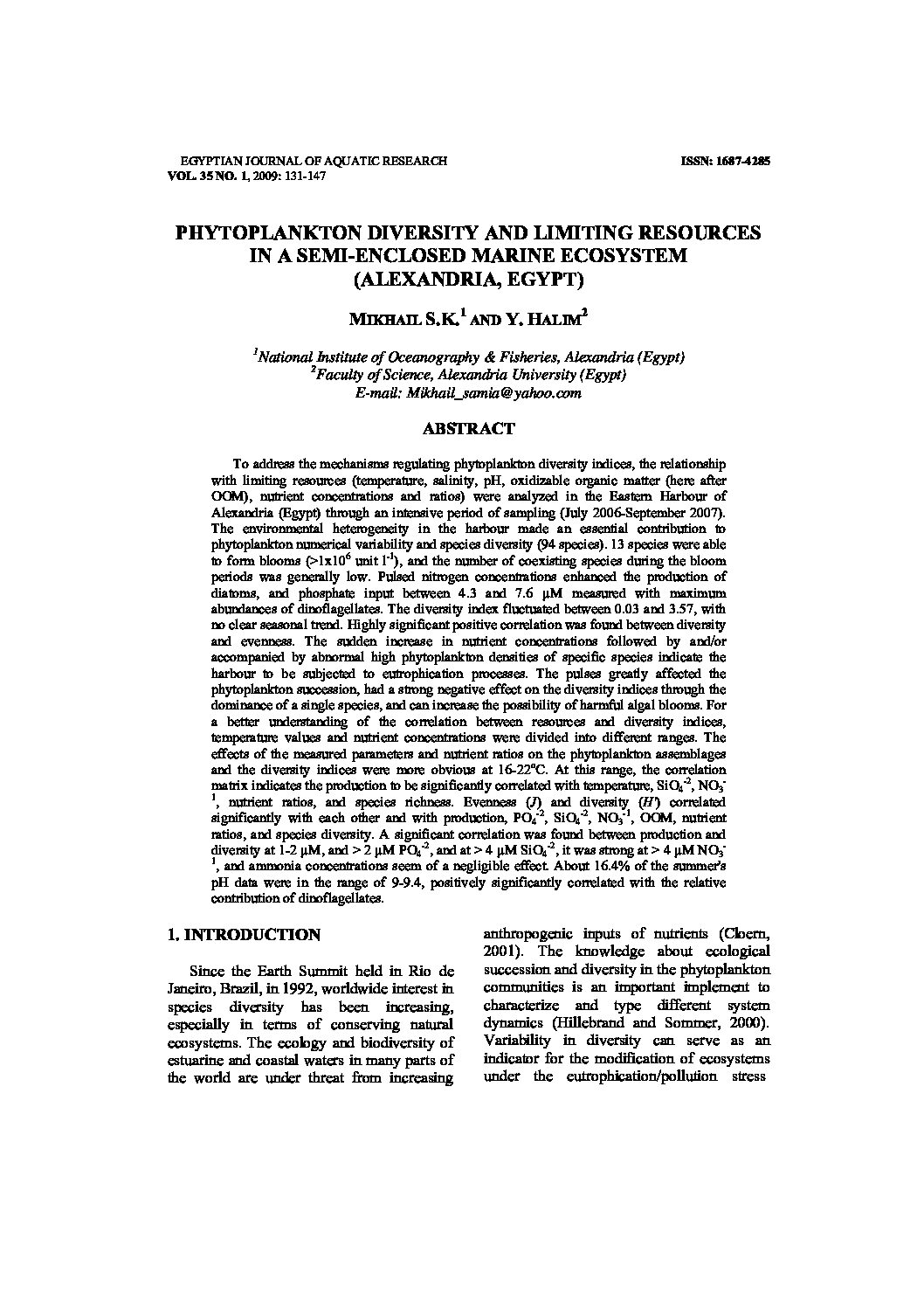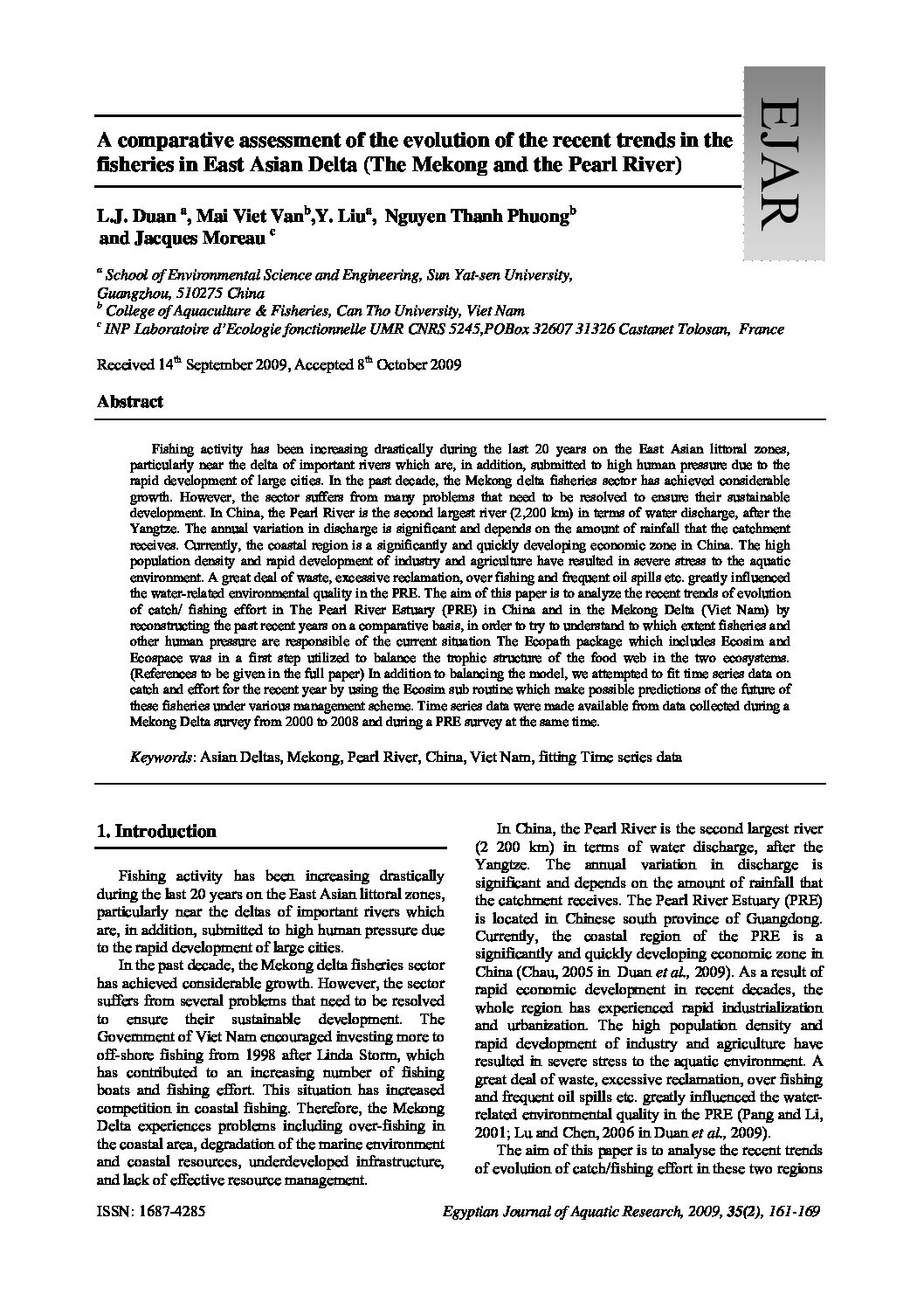Categories
vol-35PHYTOPLANKTON DIVERSITY AND LIMITING RESOURCES
IN A SEMI-ENCLOSED MARINE ECOSYSTEM
(ALEXANDRIA, EGYPT)
MIKHAIL S.K.1
AND Y. HALIM2
1
National Institute of Oceanography & Fisheries, Alexandria (Egypt) 2
Faculty of Science, Alexandria University (Egypt)
E-mail: [email protected]
ABSTRACT
To address the mechanisms regulating phytoplankton diversity indices, the relationship
with limiting resources (temperature, salinity, pH, oxidizable organic matter (here after
OOM), nutrient concentrations and ratios) were analyzed in the Eastern Harbour of
Alexandria (Egypt) through an intensive period of sampling (July 2006-September 2007).
The environmental heterogeneity in the harbour made an essential contribution to
phytoplankton numerical variability and species diversity (94 species). 13 species were able
to form blooms (>1×106
unit l-1), and the number of coexisting species during the bloom
periods was generally low. Pulsed nitrogen concentrations enhanced the production of
diatoms, and phosphate input between 4.3 and 7.6 µM measured with maximum
abundances of dinoflagellates. The diversity index fluctuated between 0.03 and 3.57, with
no clear seasonal trend. Highly significant positive correlation was found between diversity
and evenness. The sudden increase in nutrient concentrations followed by and/or
accompanied by abnormal high phytoplankton densities of specific species indicate the
harbour to be subjected to eutrophication processes. The pulses greatly affected the
phytoplankton succession, had a strong negative effect on the diversity indices through the
dominance of a single species, and can increase the possibility of harmful algal blooms. For
a better understanding of the correlation between resources and diversity indices,
temperature values and nutrient concentrations were divided into different ranges. The
effects of the measured parameters and nutrient ratios on the phytoplankton assemblages
and the diversity indices were more obvious at 16-22o
C. At this range, the correlation
matrix indicates the production to be significantly correlated with temperature, SiO4
-2, NO3
–
1
, nutrient ratios, and species richness. Evenness (J) and diversity (H’) correlated
significantly with each other and with production, PO4
-2, SiO4
-2, NO3
-1, OOM, nutrient
ratios, and species diversity. A significant correlation was found between production and
diversity at 1-2 µM, and > 2 µM PO4
-2, and at > 4 µM SiO4
-2, it was strong at > 4 µM NO3
–
1
, and ammonia concentrations seem of a negligible effect. About 16.4% of the summer’s
pH data were in the range of 9-9.4, positively significantly correlated with the relative
contribution of dinoflagellates.







